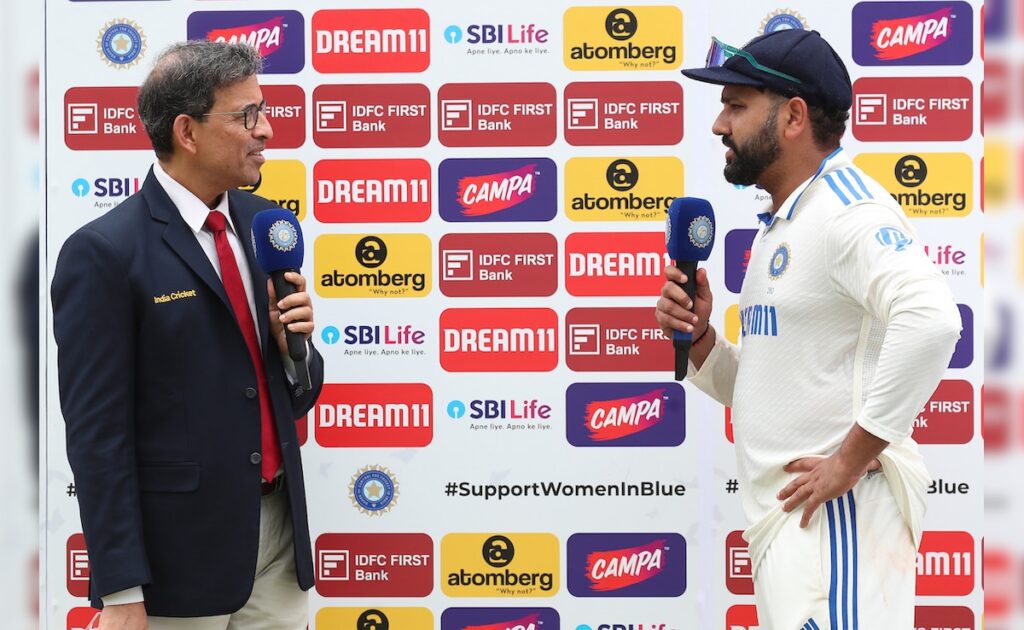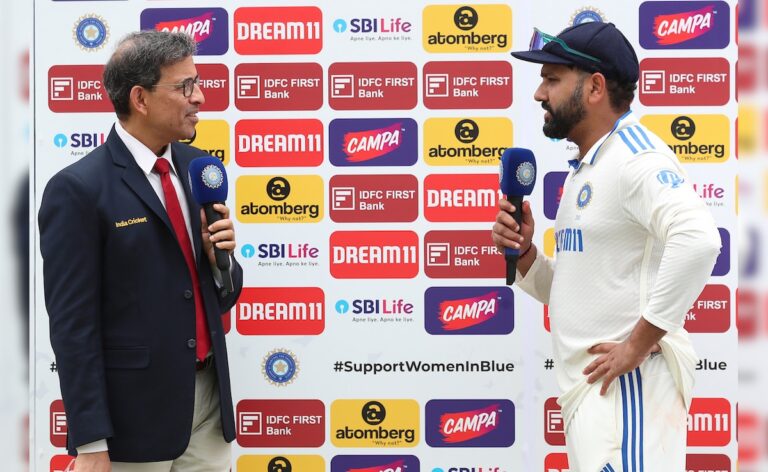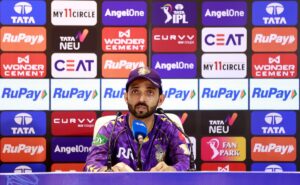
Rohit Sharma Blasts Indian Commentators For "Agenda-Driven Criticism"
Rohit Sharma Criticizes Indian Cricket Commentary for Agenda-Driven Approach
India’s cricket captain Rohit Sharma has expressed disappointment with the quality of cricket commentary in India
Table of Contents
Rohit Sharma’s Stance on Cricket Commentary
India’s ODI captain Rohit Sharma has never been one to mince words, and in a recent interview, the 38-year-old veteran cricketer expressed his growing frustration with the state of cricket commentary in India. Despite being one of the most admired cricketers in the game, Sharma hasn’t been immune to criticism from pundits, former players, and journalists throughout his illustrious career.
Since taking over as captain of the national team, Sharma has participated in several heated press conferences that have highlighted the sometimes contentious relationship between players and the media. Now in what he describes as the final phase of his career, Sharma has identified what he sees as a concerning shift in cricket broadcasting and analysis in his home country.
Key Point:
Rohit Sharma’s criticism focuses on the trend of commentators pursuing sensationalism at the expense of genuine cricket analysis, which he believes does a disservice to both players and fans of the sport.
Indian vs. Australian Commentary Standards
In his interview with cricket journalist Vimal Kumar, Sharma drew a stark comparison between the commentary standards in India and Australia. The contrast, according to Sharma, reveals a troubling trend in how cricket is presented to Indian audiences compared to the approach taken in other cricket-playing nations.
This comparison highlights what Sharma perceives as a fundamental difference in broadcasting philosophy. While Australian commentary tends to focus more on technical analysis and game strategy, Sharma suggests that Indian commentary has increasingly shifted toward targeting specific players and creating controversies, often at the expense of substantive cricket discussion.
The Rise of ‘Masala’ Over Pure Cricket Analysis
One of the most pointed observations from Sharma’s interview was his use of the term “masala” (a Hindi word often used to describe sensationalism) to characterize the current state of cricket commentary in India. He expressed concern that genuine cricket analysis has taken a backseat to entertainment and controversy in broadcasting.
Sharma, who recently retired from Test cricket, emphasized that while there are still many cricket enthusiasts who appreciate technical analysis and strategic insights, broadcasters have increasingly prioritized sensationalism to attract viewers:
This shift toward entertainment-focused content rather than substantive cricket analysis represents a concerning trend for Sharma, who believes it undermines the integrity of cricket broadcasting and does a disservice to dedicated fans of the sport.
Fan Perspective:
According to Sharma, many cricket fans are more interested in understanding the technical aspects of a player’s performance or struggles rather than personal controversies or sensationalized narratives.
Agenda-Driven Criticism in Indian Cricket Commentary
Perhaps the most serious charge in Sharma’s critique is his assertion that much of the commentary and criticism in Indian cricket has become “agenda-driven” rather than constructive or insightful. This represents a concerning evolution from legitimate criticism of poor performance to what he perceives as targeted attacks on specific players.
Sharma clarified that he’s not against criticism per se, acknowledging that players should be held accountable for poor performances:
The distinction Sharma draws is important — between fair criticism of genuine underperformance and what he sees as agenda-driven commentary designed to target specific players regardless of context. This trend, according to Sharma, has damaged the credibility of cricket analysis in India and created an unnecessarily hostile environment for players.

Rohit Sharma has been a central figure in Indian cricket for over a decade
Rohit’s Approach to Handling Criticism
Despite his frustration with the current state of cricket commentary, Sharma revealed that he has developed a measured approach to handling criticism throughout his career. Rather than engaging directly with critics or attempting to defend himself against every accusation, Sharma prefers to let his performance on the field speak for itself.
This philosophy reflects Sharma’s mature understanding of his role as a professional athlete and his recognition that responding to every criticism would be counterproductive. Instead, he focuses his energy on improving his performance and contributing to his team’s success on the field.
Impact of Commentary on Cricket and Players
Sharma’s comments highlight the broader impact that commentary and media coverage can have on cricket as a sport and on individual players. The tension between substantive analysis and entertainment-driven content represents a challenge for cricket broadcasting globally, though Sharma suggests this issue is particularly pronounced in India.
The India ODI captain emphasized the importance of respecting players and their achievements, pointing to the Indian team’s remarkable record of winning 23 out of 24 matches as an accomplishment worthy of recognition rather than constant scrutiny and criticism:
Balanced Approach:
The ideal cricket commentary, according to Sharma’s perspective, would balance technical analysis, strategic insights, and constructive criticism without resorting to sensationalism or personal attacks on players.
Sharma’s candid assessment of cricket commentary standards serves as a reminder of the responsibility that commentators and analysts bear in shaping public perception of the game and its players. As one of India’s most accomplished cricketers, his perspective offers valuable insight into how the media’s approach can affect those at the center of the sport.
While criticism will always be part of professional sports, Sharma’s call for more respectful, substantive analysis represents an important perspective in an era where sensationalism and controversy often drive media coverage. His comments invite reflection on the purpose of cricket commentary and how it can best serve both the players and the millions of fans who follow the sport.
Published on May 8, 2025






